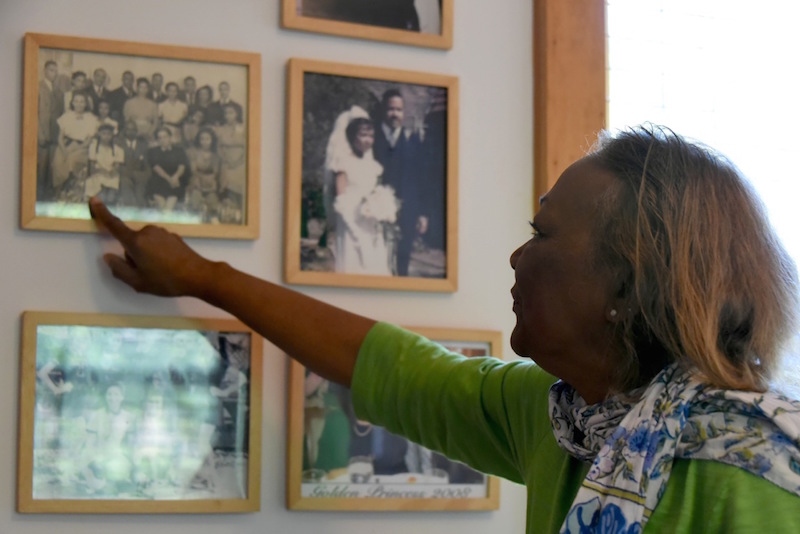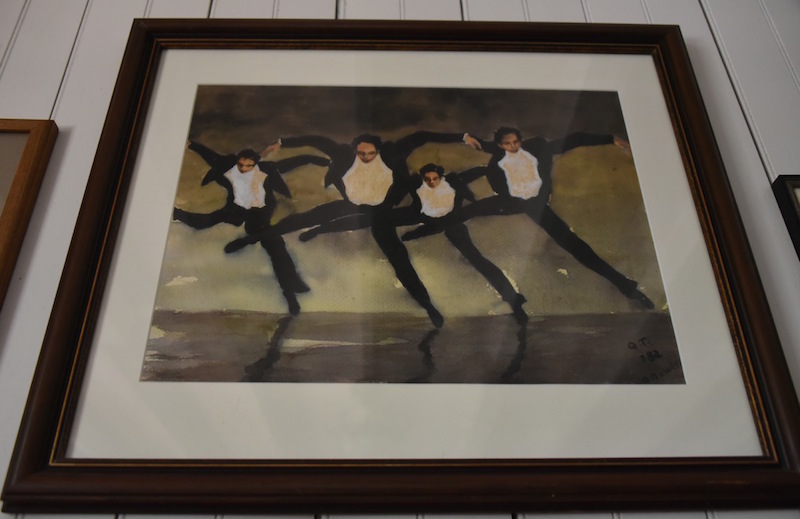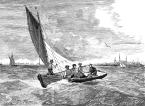In the 1940s, acting was mostly a white profession, with limited and often stereotyped roles for African Americans. But that did little to stop a small group of women from starting the Shearer Summer Theatre, which briefly flourished on the Island.
The first production was The Women, by Clare Boothe Luce. Olive Tomlinson, whose mother, Cutie Bowles was among the early organizers of the theatre, played a rambunctious Little Mary, who observes the escapades of Manhattan socialites. The Women was staged in New York, but from then on, all the summer plays were performed on the Vineyard, mostly at school auditoriums down-Island.
On a recent afternoon at her home in Oak Bluffs, Ms. Tomlinson recalled those joyous summers in the 1940s and 1950s that few still remember.
Ms. Tomlinson will speak about her mother — the actress, artist, seamstress and costume designer — at the Martha’s Vineyard Museum on August 8. The talk begins at 5:30 p.m. at the museum's Edgartown campus.
The Shearer Summer Theatre was one of the first summer groups of its kind on the Island after World War II. Ms. Bowles was among a triad of women who commandeered supplies, volunteers and actors to make it all happen. Ms. Tomlinson was only about 10 at the time, and admits to having had other priorities. But a collection of photographs by her father, William Bowles — and a 2013 exhibit at the museum exploring 100 years of theatre on the Island — helped revive those memories.
“This was the forties, early fifties,” Ms. Tomlinson said in a recent interview at her home in Oak Bluffs, surrounded by her artwork and that of her mother (both painted watercolors). “No one studied, so of course they said they couldn’t do it,” she said of the actors. “But they did it.” Costume designer Liz White and her cousin Miriam Walker, an actress, were also part of the triad of Oak Bluffs summer residents that founded the theatre and produced its 10 or so plays over a span of several years. Eventually all three women moved to the Island full time.
“Liz was the dynamo, the driving force behind all theatrical adventures,” Ms. Tomlinson said. “My mother was the reluctant second lead.” She added: “Miriam Walker was extraordinarily glamorous. From the beginning a grand dame: a hostess! People fell over each other to get to go to her parties.”
Ms. Tomlinson’s house, in the labyrinthine neighborhood known as the Highlands of Oak Bluffs, is a short walk from Shearer Cottage, a popular vacation spot for African Americans, and the summer theatre’s inspiration and namesake. Shearer Cottage was owned by Ms. Walker’s mother, Sadie Shearer Ashburn. Ms. Tomlinson recalled her summers working as a waitress at the cottage, when its kitchen would serve up to 50 people at a time.
“Shearer was the lynchpin of this area: the Highlands,” she said.
She pointed through a picture window at a small, weathered house across the lawn that belonged to her mother (now Ms. Tomlinson rents it out year-round). Also nearby is Twin Cottage, which is said to have been built by a sea captain for his two daughters. Ms. White, who owned the cottage, used it as the backdrop to a performance of Othello, starring Yaphet Kotto (of later movie fame) as Othello, and Ms. White’s son, Richard Dixon, as Iago.
Ms. White later devoted eight years to the filming of the production, which marked a turning point as the summer theatre gradually faded away. More than halfway through the filming, Mr. Kotto was summoned to Hollywood, leaving Ms. White somewhat empty handed as she struggled to complete the film.
“She kept going,” Ms. Tomlinson said, and the film was eventually completed — shot mostly at Twin Cottage, and in Aquinnah and New Jersey. The Martha’s Vineyard Museum hosted a screening of the film at the Union Chapel in 2012.
A few moments of real-life drama from the theatre days still linger in Ms. Tomlinson’s memory. She recalled a performance of Slabtown Convention — a comedy about a group of Baptist women attending a church convention in the 1920s — at the former Oak Bluffs School. During one scene, Ms. White’s brother, Lincoln Pope, who played the minister, raised his arms in supplication to the heavens. “His arms are raised and it was so dramatic, and a clap of thunder comes — really happens,” Ms. Tomlinson said. “And he says, ‘Thank you lord, thank you!’ It brought down the house.”
In a performance of Gas Light (Angel Street), Mrs. Bowles played a flirtatious housemaid who betrays the intentions of her employer, Mr. Manningham, who in order to cover his trail in a murder tries to convince his wife that she is going insane. Ms. Tomlinson said the housemaid role came naturally to her mother. “Flirtatious,” she said. “That’s what she was. And when you see her picture, you’ll say, now I get it.”
Olive (Cutie) Bowles was one of 15 sisters and brothers that grew up in New York city. (“My mother was the cutest,” Ms. Tomlinson said.) The oldest seven sisters all went to school to learn secretarial skills and other trades that were considered suitable for women at the time. As a result, Mrs. Bowles had a long career as a seamstress, and became indispensable to the summer theatre. But sadly, Ms. Tomlinson said, her costumes survive only as memories and in her father’s photographs.
“I’m thankful for him, because he photographed it all,” she said.
Othello marked the end of an era as Ms. White’s attention turned more toward completing the film absent its original star. A production of West Side Story, aimed at a younger audience, was the theatre’s swan song, after which it disappeared almost without a trace. “Only those who had been in it talked about it,” Ms. Tomlinson said. “That’s it. It petered out. It died its natural death.”
More than 50 years later, Linsey Lee of the Martha’s Vineyard Museum met with Ms. Tomlinson to record an oral history of the summer theatre and help preserve its memory. “She was very important in getting me to open my eyes to the uniqueness of the people involved,” Ms. Tomlinson said. As one result of those efforts, William Bowles’s photographs are now part of the museum’s permanent collection.
Ms. Tomlinson shuffled through some old programs and other material on her dining room table that she had gathered in preparation for the talk next week. Surrounding her on the walls were several of her mother’s watercolors — signed Q.T. as she was known to do later in life — and several of Ms. Tomlinson’s own Island landscapes.
The talk next Tuesday will focus on Mrs. Bowles’s life and work as only Ms. Tomlinson can tell it. This time her role will be more open ended, with the museum offering only minor direction.
“They said, ‘Just talk, just talk,’” Ms. Tomlinson said. “’You can do it.’”









Comments (7)
Comments
Comment policy »